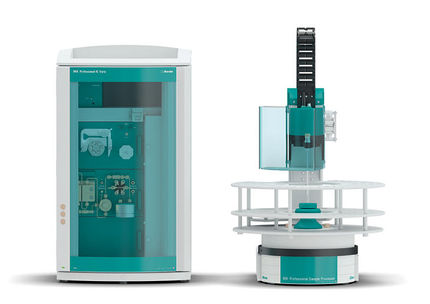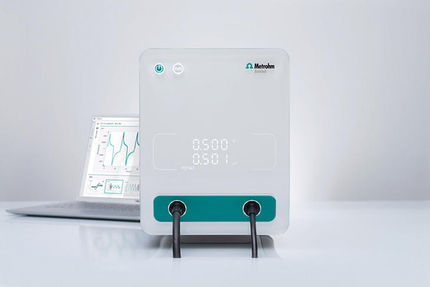This page provides supplementary chemical data on benzene.
Material Safety Data Sheet
The handling of this chemical may incur notable safety precautions. It is highly recommend that you seek the Material Safety Datasheet (MSDS) for this chemical from a reliable source such as SIRI, and follow its directions. MSDS for benzene available at AMOCO.
Structure and properties
| Structure and properties
|
| Index of refraction, nD
| 1.5011 at 20°C
|
| Abbe number
| ?
|
| Dielectric constant, εr
| (2.274 – 0.0020ΔT) ε0
(ΔT = T – 25 °C)
|
| Bond strength
| ?
|
| Bond length
| ?
|
| Bond angle
| 120° C–C–C
120° H–C–C
|
| Magnetic susceptibility
| ?
|
| Surface tension
| 28.88 dyn/cm at 25°C
|
| Viscosity[1]
|
| 0.7528 mPa·s | at 10°C
|
| 0.6999 mPa·s | at 15°C
|
| 0.6516 mPa·s | at 20°C
|
| 0.6076 mPa·s | at 25°C
|
| 0.5673 mPa·s | at 35°C
|
| 0.4965 mPa·s | at 40°C
|
| 0.4655 mPa·s | at 45°C
|
| 0.4370 mPa·s | at 50°C
|
| 0.4108 mPa·s | at 55°C
|
| 0.3867 mPa·s | at 60°C
|
| 0.3644 mPa·s | at 65°C
|
| 0.3439 mPa·s | at 70°C
|
| 0.3250 mPa·s | at 75°C
|
| 0.3075 mPa·s | at 80°C
|
|
Thermodynamic properties
| Phase behavior
|
| Triple point
| 278.5 K (5.4 °C), ? Pa
|
| Critical point
| 562 K (289 °C), 4.74 MPa
|
Std enthalpy change
of fusion, ΔfusHo
| 9.9 kJ/mol at 5.42 °C
|
Std entropy change
of fusion, ΔfusSo
| 35.5 J/(mol·K) at 5.42 °C
|
Std enthalpy change
of vaporization, ΔvapHo
| 33.9 kJ/mol at 25°C
30.77 kJ/mol at 80.1°C
|
Std entropy change
of vaporization, ΔvapSo
| 113.6 J/(mol·K) at 25°C
87.1 J/(mol·K) at 80.1°C
|
| Solid properties
|
Std enthalpy change
of formation, ΔfHosolid
| ? kJ/mol
|
Standard molar entropy,
Sosolid
| 45.56 J/(mol K)
|
| Heat capacity, cp
| 118.4 J/(mol K) at 0°C
|
| Liquid properties
|
Std enthalpy change
of formation, ΔfHoliquid
| +48.7 kJ/mol
|
Standard molar entropy,
Soliquid
| 173.26 J/(mol K)
|
Enthalpy of combustion, ΔcHo
| –3273 kJ/mol
|
| Heat capacity[1], cp
| 134.8 J/(mol K)
|
| Gas properties
|
Std enthalpy change
of formation, ΔfHogas
| +82.93 kJ/mol
|
Standard molar entropy,
Sogas
| 234.9 J/(mol K)
|
| Heat capacity[1], cp
| 82.44 J/(mol K) at 25°C
|
| van der Waals' constants[2]
| a = 1823.9 L2 kPa/mol2
b = 0.1154 liter per mole
|
Vapor pressure of liquid
| P in mm Hg | 1 | 10 | 40 | 100 | 400 | 760 | 1520 | 3800 | 7600 | 15200 | 30400 | 45600
|
| T in °C | –36.7(s) | –11.5(s) | 7.6 | 26.1 | 60.6 | 80.1 | 103.8 | 142.5 | 178.8 | 221.5 | 272.3 | —
|
Table data obtained from CRC Handbook of Chemistry and Physics 44th ed. Note: (s) notation indicates equilibrium temperature of vapor over solid, otherwise value is equilibrium temperature of vapor over liquid.
Distillation data
Vapor-liquid Equilibrium
for Benzene/Ethanol[3]
P = 760 mm Hg
|
BP
Temp.
°C
| % by mole ethanol
|
| liquid | vapor
|
| 70.8 | 8.6 | 26.5
|
| 69.8 | 11.2 | 28.2
|
| 69.6 | 12.0 | 30.8
|
| 69.1 | 15.8 | 33.5
|
| 68.5 | 20.0 | 36.8
|
| 67.7 | 30.8 | 41.0
|
| 67.7 | 44.2 | 44.6
|
| 68.1 | 60.4 | 50.5
|
| 69.6 | 77.0 | 59.0
|
| 70.4 | 81.5 | 62.8
|
| 70.9 | 84.1 | 66.5
|
| 72.7 | 89.8 | 74.4
|
| 73.8 | 92.4 | 78.2
|
|
|
Vapor-liquid Equilibrium
for Benzene/Methanol[3]
P = 760 mm Hg
|
BP
Temp.
°C
| % by mole methanol
|
| liquid | vapor
|
| 70.67 | 2.6 | 26.7
|
| 66.44 | 5.0 | 37.1
|
| 62.87 | 8.8 | 45.7
|
| 60.20 | 16.4 | 52.6
|
| 58.64 | 33.3 | 55.9
|
| 58.02 | 54.9 | 59.5
|
| 58.10 | 69.9 | 63.3
|
| 58.47 | 78.2 | 66.5
|
| 59.90 | 89.8 | 76.0
|
| 62.71 | 97.3 | 90.7
|
|
|
Vapor-liquid Equilibrium
for Benzene/Acetone[3]
P = 101.325 kPa
|
BP
Temp.
°C
| % by mole benzene
|
| liquid | vapor
|
| 57.34 | 11.7 | 7.4
|
| 57.48 | 12.8 | 8.1
|
| 57.75 | 15.1 | 9.5
|
| 59.21 | 26.7 | 16.6
|
| 59.24 | 27.0 | 16.7
|
| 60.01 | 32.7 | 20.2
|
| 60.71 | 37.3 | 23.1
|
| 61.05 | 39.8 | 24.7
|
| 61.91 | 45.0 | 27.9
|
| 62.82 | 50.2 | 31.7
|
| 63.39 | 53.4 | 33.9
|
| 63.79 | 55.4 | 35.3
|
| 64.22 | 57.2 | 37.0
|
| 64.99 | 61.3 | 39.9
|
| 67.88 | 73.0 | 51.2
|
| 70.21 | 80.7 | 60.1
|
| 72.23 | 86.1 | 67.9
|
|
|
Vapor-liquid Equilibrium
for Benzene/n-Hexane[3]
P = 760 mmHg
|
BP
Temp.
°C
| % by mole hexane
|
| liquid | vapor
|
| 77.6 | 7.3 | 14.0
|
| 75.1 | 17.2 | 26.8
|
| 73.4 | 26.8 | 37.6
|
| 72.0 | 37.2 | 46.0
|
| 70.9 | 46.2 | 54.0
|
| 70.0 | 58.5 | 64.4
|
| 69.4 | 69.2 | 72.5
|
| 69.1 | 79.2 | 80.7
|
| 69.0 | 82.8 | 83.8
|
| 68.9 | 88.3 | 88.8
|
| 68.8 | 94.7 | 95.0
|
| 68.8 | 96.2 | 96.4
|
|
Spectral data
| UV-Vis
|
| λmax
| ? nm
|
| Extinction coefficient, ε
| ?
|
| IR
|
| Major absorption bands[4]
|
| (liquid film)
|
| Wave number | transmittance
|
| 3091 cm−1 | 42%
|
| 3072 cm−1 | 49%
|
| 3036 cm−1 | 27%
|
| 1961 cm−1 | 77%
|
| 1815 cm−1 | 70%
|
| 1526 cm−1 | 81%
|
| 1479 cm−1 | 20%
|
| 1393 cm−1 | 84%
|
| 1176 cm−1 | 86%
|
| 1038 cm−1 | 49%
|
| 674 cm−1 | 4%
|
|
| NMR
|
| Proton NMR
|
|
| Carbon-13 NMR
|
|
| Other NMR data
|
|
| MS
|
Masses of
main fragments
|
|
Safety data
Material Safety Data Sheet for benzene:
| Common synonyms
| None
|
| Physical properties
| Form: colorless liquid
|
|
| Stability: Stable, but very flammable
|
|
| Melting point: 5.5 C
|
|
| Water solubility: negligible
|
|
| Specific gravity: 0.87
|
| Principal hazards
| *** Benzene is a carcinogen (cancer-causing agent).
|
|
| *** Very flammable. The pure material, and any solutions containing it, constitute a fire risk.
|
| Safe handling
| Benzene should NOT be used at all unless no safer alternatives are available.
|
|
| If benzene must be used in an experiment, it should be handled at all stages in a fume cupboard.
|
|
| Wear safety glasses and use protective gloves.
|
| Emergency
| Eye contact: Immediately flush the eye with plenty of water. Continue for at least ten minutes
|
|
| and call for immediate medical help.
|
|
| Skin contact: Wash off with soap and water. Remove any contaminated clothing. If the skin
|
|
| reddens or appears damaged, call for medical aid.
|
|
| If swallowed: Call for immediate medical help.
|
| Disposal
| It is dangerous to try to dispose of benzene by washing it down a sink, since it is toxic, will cause environmental damage
|
|
| and presents a fire risk. It is probable that trying to dispose of benzene in this way will also break local
|
|
| environmental rules. Instead, retain in a safe place in the laboratory (well away from any source of ignition)
|
|
| for disposal with other flammable, non-chlorinated solvents.
|
| Protective equipment
| Safety glasses. If gloves are worn, PVA, butyl rubber and viton are suitable materials.
|
References
- ^ a b c d Pure Component Properties (Queriable database). Chemical Engineering Research Information Center. Retrieved on 12-May 2007.
- ^ Lange's Handbook of Chemistry 10th ed, pp 1522-1524
- ^ a b c d Binary Vapor-Liquid Equilibrium Data (Queriable database). Chemical Engineering Research Information Center. Retrieved on 12 May 2007.
- ^ [http://www.aist.go.jp/RIODB/SDBS/cgi-bin/cre_index.cgi Spectral Database for
Organic Compounds] (Queriable database). Advanced Industrial Science and Technology. Retrieved on 10 June 2007.
Except where noted otherwise, data relate to standard ambient temperature and pressure.
Disclaimer applies.
|







